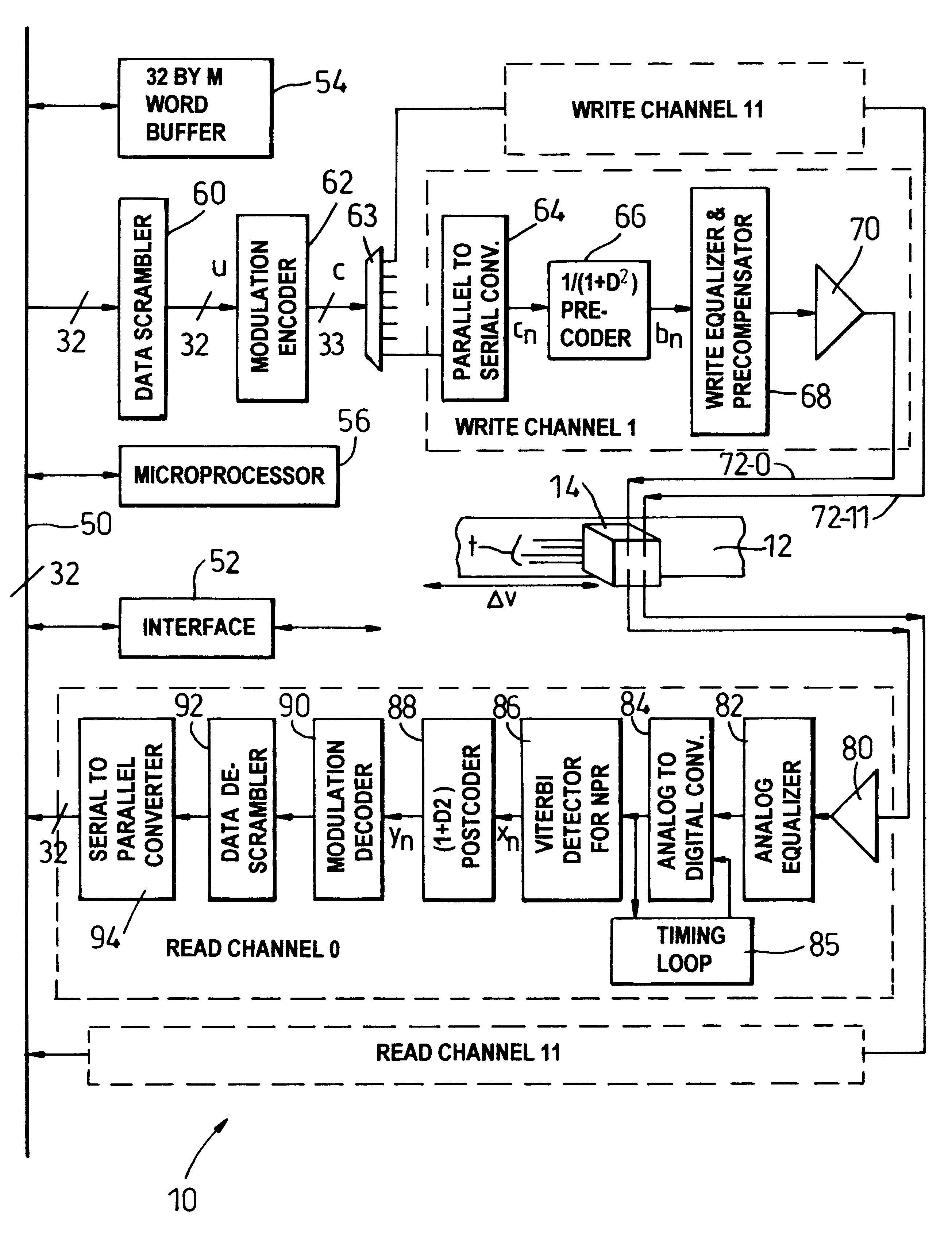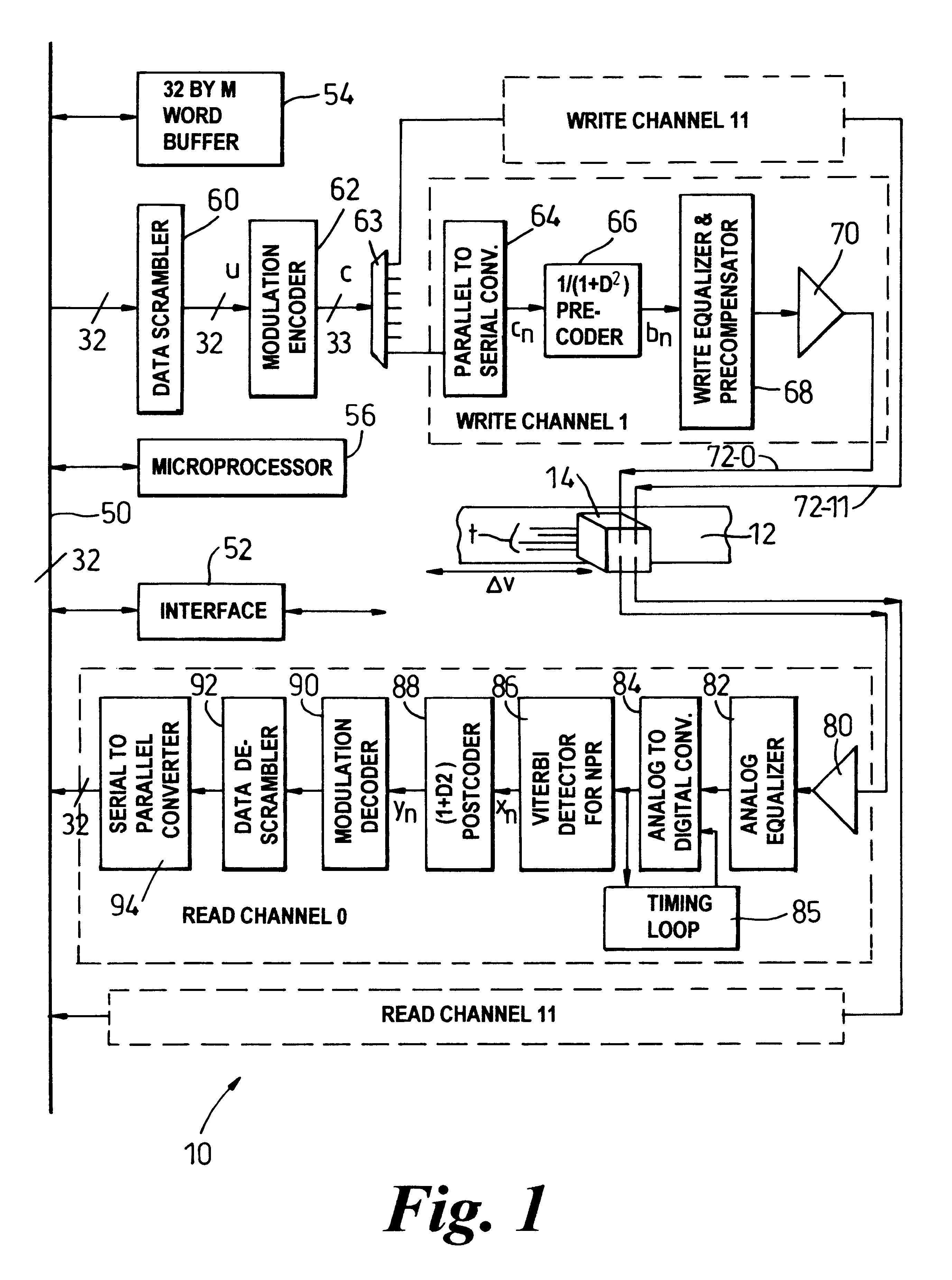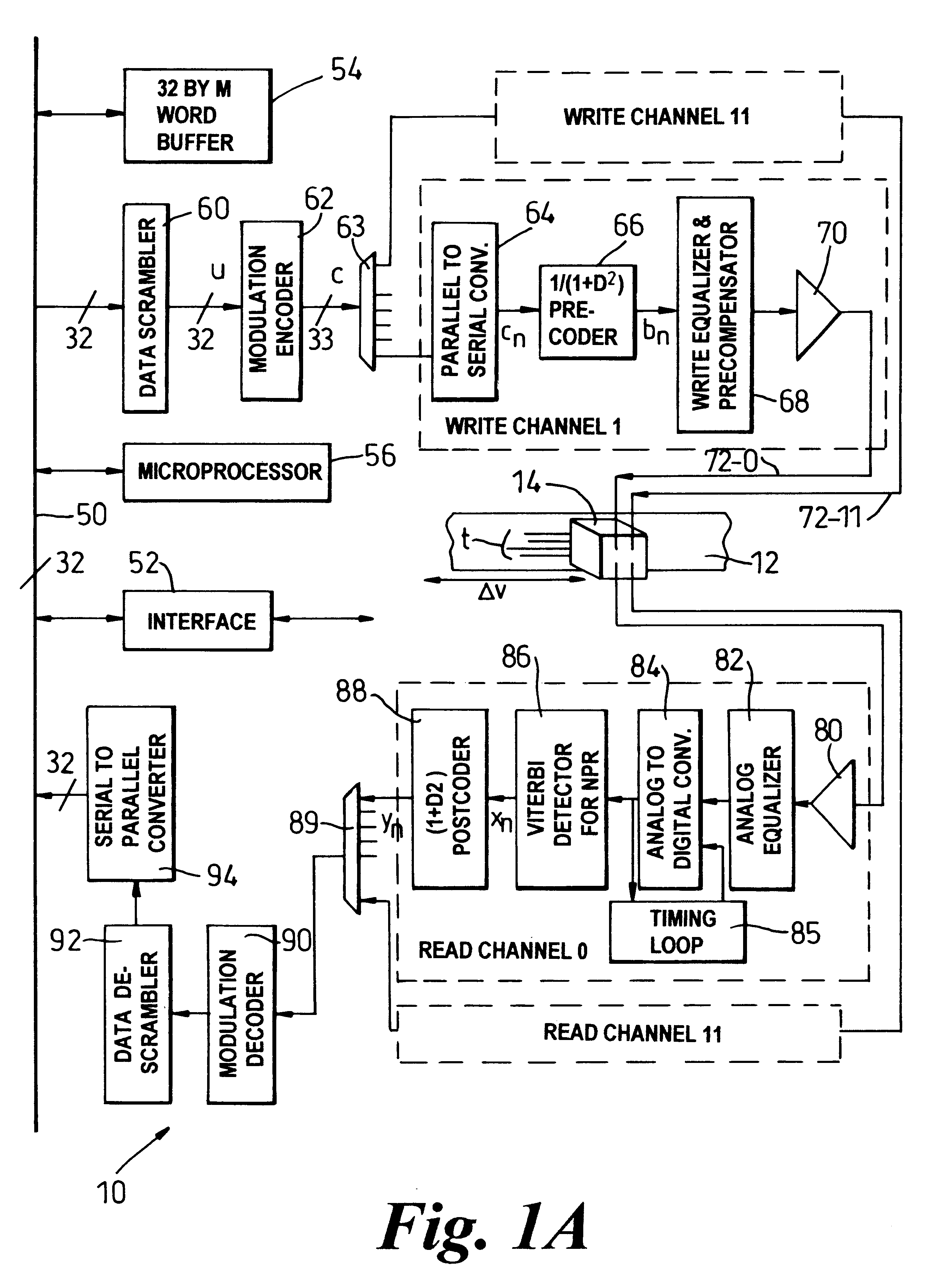Rate 32/33 (D=0, K=6) run length limited modulation code having optimized error propagation
a technology of run length and modulation code, applied in the direction of code conversion, recording signal processing, instruments, etc., can solve the problems of affecting the instantaneous change of angular velocity, the relatively low mass of moving recording tapes, and the inability to realize the practical hardware implementation of encoding and decoding processes
- Summary
- Abstract
- Description
- Claims
- Application Information
AI Technical Summary
Benefits of technology
Problems solved by technology
Method used
Image
Examples
case 1
lations in U (59% likelihood of occurrence (upon the assumption that ones and zeros are equally likely to occur at the input to the modulation encoder)). The FLAG variable is set equal to 00000000. The control bit of code sub-word c5, i.e. c5[0], is set equal to one and the remaining nibbles are passed unencoded. Thus, c7 equals u7, c6 equals u6, c5[5-1] equals u5, c4 equals u4, c3 equals u3, c2 equals u2, c1 equals u1 and c0 equals u0.
case 2
olation in U (31.8% likelihood of occurrence). The FLAG variable is set equal to one of {00000001, 00000010, 00000100, . . . 10000000 } depending upon the location of the nibble containing the code violation. The bits c5[0] and c5[2] are set to be equal to zero and one respectively. The remaining c5 bits are used to indicate in which of the eight locations the single violation occurred. For example, if FLAG indicates that the third low order nibble u2 contained the single code violation (FLAG=00000100), then c5[0]=0, c5[2]=1, and c5[4:3, 1]=010 to indicate that the third nibble u2 contains four zeros. Since the nibble c5 is used to indicate in this example that the nibble u2 is all zeros, the information in user nibble u5 is mapped into the third code nibble position c2. Encoding is completed as c7 equals u7, c6 equals u6, c5 equals [01110], c4 equals u4, c3 equals u3, c2 equals u5, c1 equals u1 and c0 equals u0.
case 3
olations in U (7.4% likelihood of occurrence). The FLAG variable has two bit positions set, e.g. {00000011, 00000101, . . . 11000000}. The bits c5[0] and c5[2] are set to zero, and the bit c4[3] is set to one. The remaining c5 bit positions are used to indicate in which of the eight locations the left side violation occurred, and the bits c4[2:0] indicate the nibble position of the right side violation. For example, if violations occurred in nibbles u7 and u0, FLAG is equal to 10000001, and c5[0] equals zero, c5[2] equals zero, c4[3] equals 1, c5[4:3,1] equals 111 and c4[2:0] equals 000. Since the user nibble u7 is all zeros, the nibble c5 is used to indicate that nibble u7 is all zeros, and the information in nibble u5 is mapped into c7 (i.e. the 8th code nibble). Similarly, the information in user nibble u4 is mapped into cO (the first code nibble). The final encoding of this example is therefore c7 is equal to u5, c6 is equal to u6, c5 is equal to [01100], c4 is equal to [1000], ...
PUM
| Property | Measurement | Unit |
|---|---|---|
| zero run length | aaaaa | aaaaa |
| run length | aaaaa | aaaaa |
| size | aaaaa | aaaaa |
Abstract
Description
Claims
Application Information
 Login to View More
Login to View More - R&D
- Intellectual Property
- Life Sciences
- Materials
- Tech Scout
- Unparalleled Data Quality
- Higher Quality Content
- 60% Fewer Hallucinations
Browse by: Latest US Patents, China's latest patents, Technical Efficacy Thesaurus, Application Domain, Technology Topic, Popular Technical Reports.
© 2025 PatSnap. All rights reserved.Legal|Privacy policy|Modern Slavery Act Transparency Statement|Sitemap|About US| Contact US: help@patsnap.com



